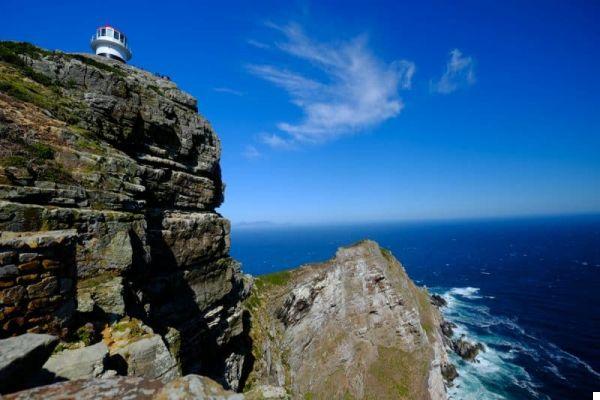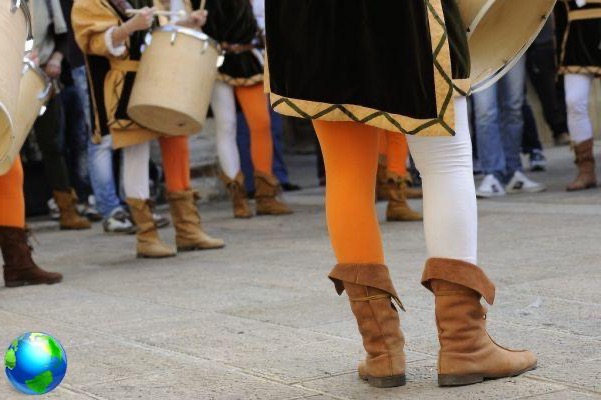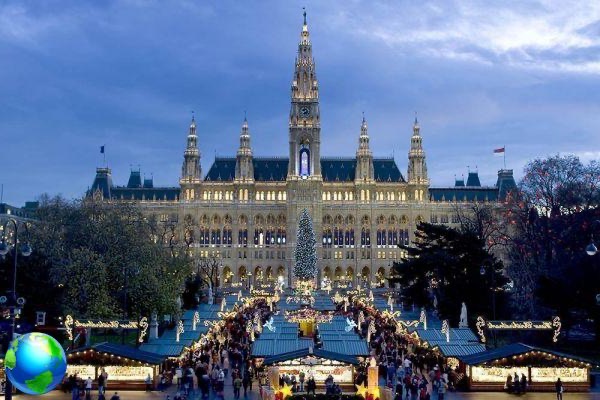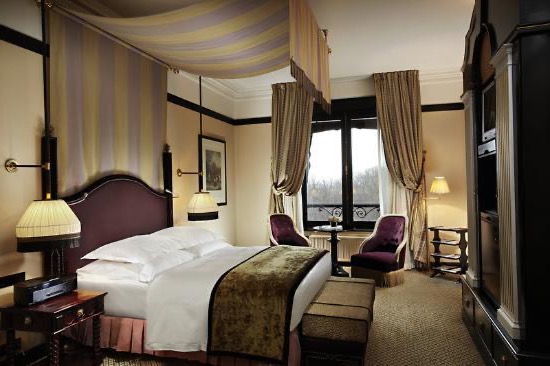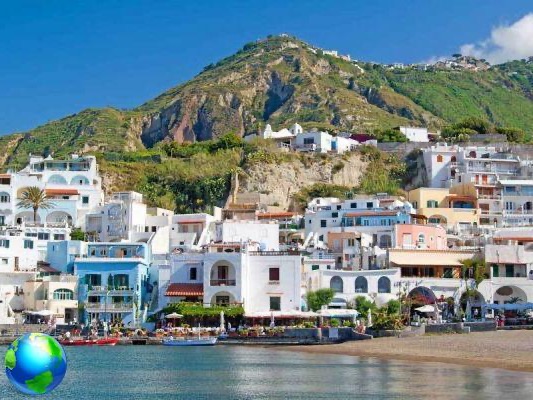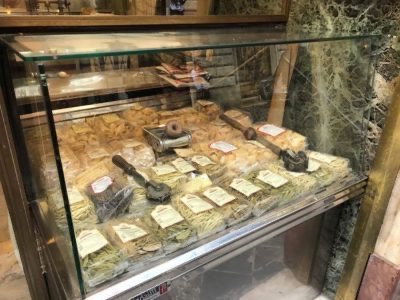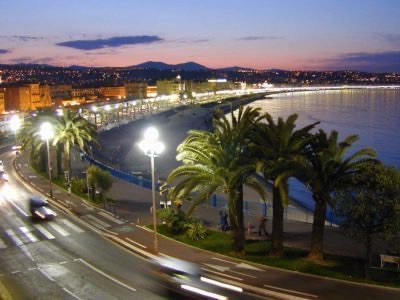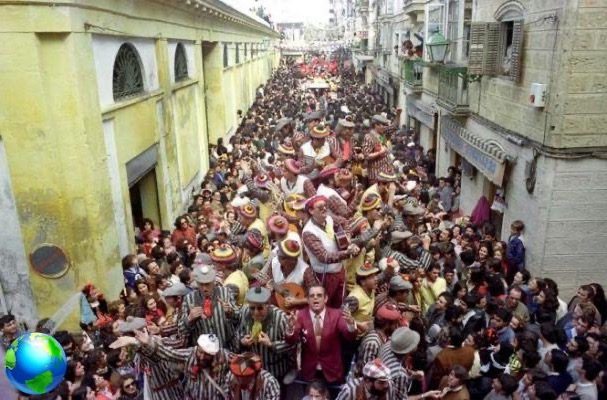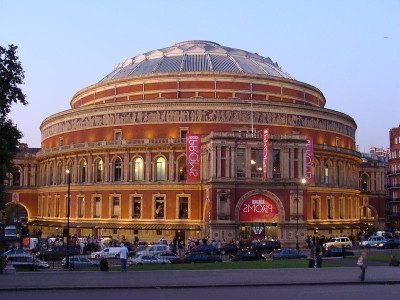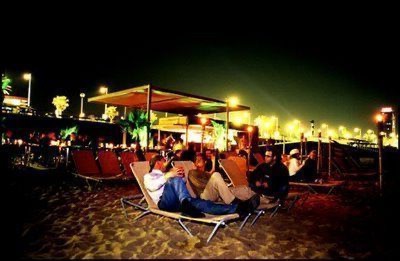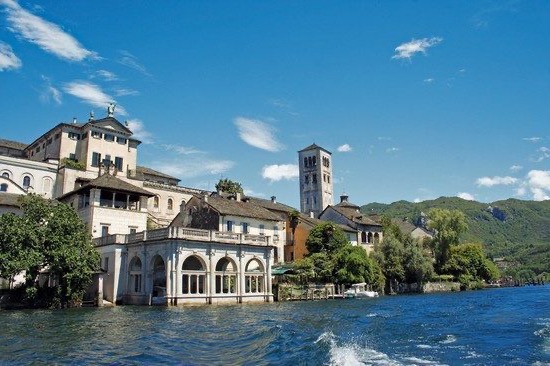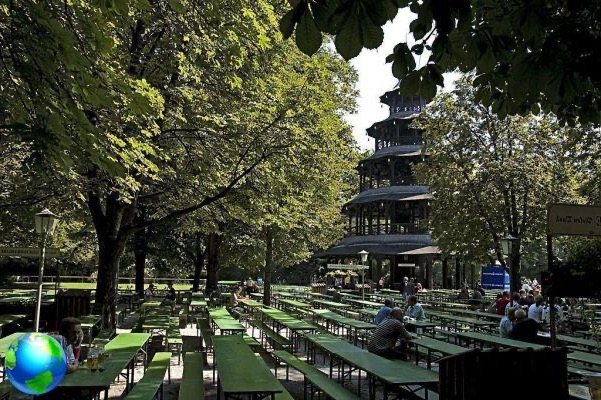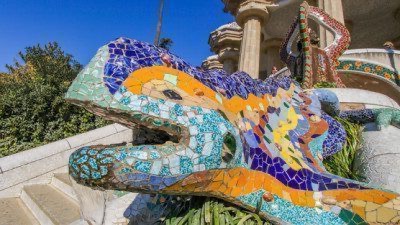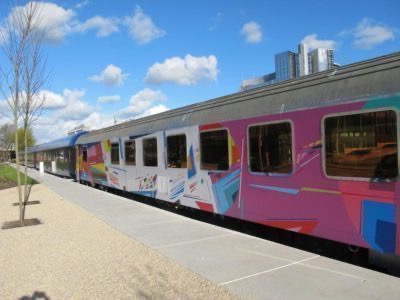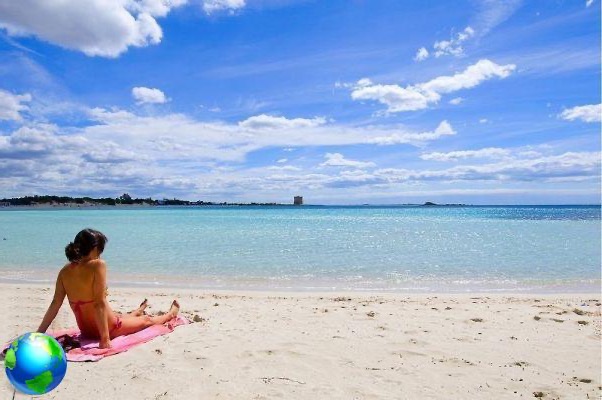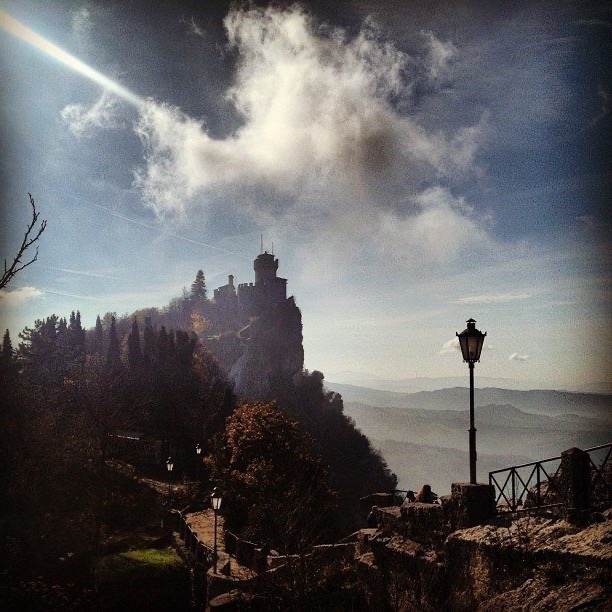I returned to Cape Town after several years and I found it exactly the same as I remembered it, a very beautiful city with a magnificent natural setting, but a deeply inequitable city divided in two: by great approximation ... there is Cape Town of rich whites and that of poor blacks. Two worlds that do not touch and do not even touch each other by mistake. Apartheid officially ended in 1994 but it is clear that integration is still a long way off and that the road will be long and difficult. Social issues aside, Cape Town is certainly the most beautiful city in southern Africa, with a super evocative natural setting formed by Table Mountain (the flat mountain), Signal Hill, Lion's Head and the Massif of the Twelve Apostles that slopes almost overhangingly. on the spectacular Atlantic coast. What is most striking about Cape Town is the green, it's everywhere! In reality it is a city that offers a lot to any type of tourist. In addition to the natural attractions that offer great opportunities for outdoor sports (hiking, climbing, swimming, surfing, kitesurfing, etc.), Cape Town is a culturally very vibrant city, with state-of-the-art museums and sites of historical interest, without forget a music scene and a respectable nightlife.
When to go to Cape Town
In South Africa the seasons are reversed compared to ours because, as is well known, it is located in the southern hemisphere; summer runs from November to February and winter from June to September. In reality, in terms of temperatures, there is not a great difference between the seasons. During the winter (our summer) temperatures can reach 20 ° during the day, while in summer they reach 30 °. In general, the days are dry and sunny in both summer and winter. The water temperature, on the other hand, is freezing all year round. Of note is the wind, omnipresent in the summer in Cape Town, which can be particularly strong and annoying.
How to get there and how to get around
Cape Town International Airport is located 22km outside the city. The center can be reached by taxi (around 300R) or by Uber (less than 200R). At the airport the wi-fi is free for 30 'and you will have no problem calling an Uber upon landing. I advise you not to buy a South African SIM at the airport because you will overpay for it. Wait until you arrive in the center. To get around Cape Town the most comfortable and safe way is definitely Uber. There are a lot of cars, it's cheap and you won't wait more than 2-5 minutes to go anywhere. To reach Hermanus or take the trip to Muizenberg-Boulder Beach-Cape Point, on the other hand, it is advisable to rent a car; I usually use the Rentalcars website (remember that in South Africa you drive on the right!). Public buses that go out of town practically do not exist. Alternatively you can use a private transfer (e.g. by contacting agencies like Bernardus), but it will cost you a lot.
How much is spent
A trip to South Africa (and Cape Town in particular) in the high season (December-January) can be very expensive and must be organized several months in advance (even 6-9 months). For the Christmas and New Year period (when South Africans are also on vacation), a flight from Europe to Cape Town can cost even more than 2-3000 euros (if purchased early) and all the facilities are at business suit. If you intend to go to South Africa during this period, you should buy / book everything very well in advance. An average of 50 euros per person is spent on sleeping (for a double room in a nice structure with en-suite bathroom) and around 20-25 euros to eat. In general, the prices do not differ much from those in Spain, except for taxis which cost much less. In the low season the prices are a little lower.
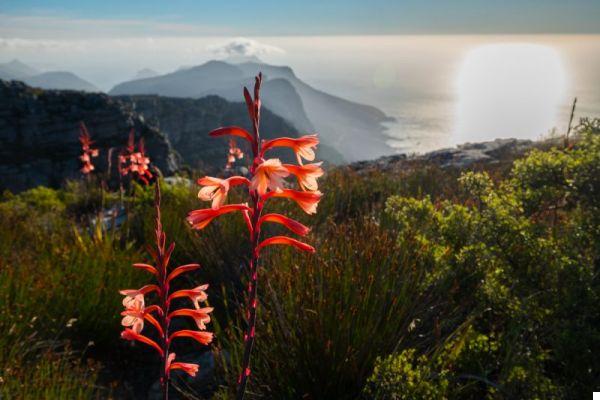
Security in South Africa
Safety is, with good reason, an issue that is strongly felt by both locals and tourists. Often and gladly you will be told not to go out on foot at night (even in the center) and not to go to certain areas / streets. In general, it is good to stick to these rules and always keep your eyes open, avoiding going around with too flashy clothes or expensive accessories. Many houses have high walls, electrified wires and often a security guard. Social inequality and great poverty lead to a high rate of petty crime. Personally, in both trips that I have done in South Africa, I have not had negative experiences, but I agree that you must always keep your eyes open almost everywhere. For example, to go and see Woodstock street art (see below) it is good to rely on a guide; some streets in this area of the city can be particularly dangerous even during the day. The same goes for the townships.
Health insurance is required
In South Africa our health coverage is not valid. My advice is to always take a classic medical-luggage insurance that can cover you during the trip. I am very happy with many insurance companies, a site that compares the policies of different companies and proposes the most convenient policy for that particular trip. To do this you will have to enter the data relating to your trip (country, duration, etc.) and they will send you an email with the best proposal that you can then buy directly online.
What to bring and how to dress
For a trip to Cape Town you will need light clothing for the day, but also a light down jacket and / or windproof jacket for the evening. Don't forget your swimsuit and a factor of 30 or 50 sunscreen: the sun is really strong!
Electricity and internet
The current in South Africa is 220V as in Italy, but the sockets require special round plugs which are not normally included in the adapters on the market. Often hotels are equipped with gearboxes, otherwise you will find them easily in supermarkets.
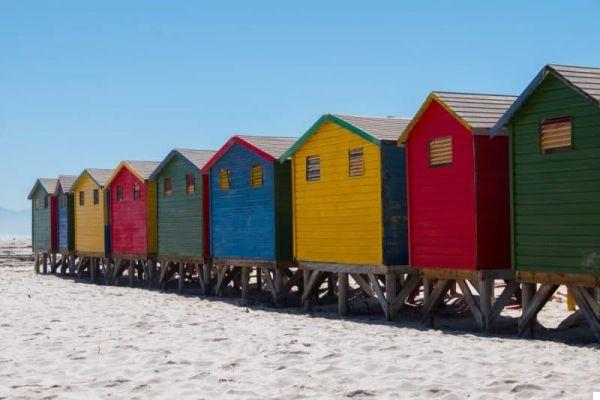
Where to sleep in Cape Town
The areas where I recommend you sleep in Cape Town there are two: Greenpoint o Gardens. I recommend the first one because from here you can easily reach the Waterfront and the beaches; the second because it is one of the coolest and most youthful areas of Cape Town, there are nice clubs, restaurants and shops and you can reach Long Street on foot.
- [email protected] (Greenpoint). Very nice, modern and super-equipped hostel. Double rooms with private bathroom cost around € 50 each but look rather like the rooms in a boutique hotel. You can organize with them the township tour with Juma and many other tours. Another advantage, just outside the hostel there is a supermarket, a large parking lot, many bars and many restaurants.
- Once in Cape Town (Gardens). Very well-kept, well-equipped hostel, also popular with young people from Cape Town (the rooftop bar inside the hostel, Yours Truly, is one of the most famous clubs in the city). Prices vary depending on the room: a bed in a room for 4 with private bathroom and breakfast included costs for example 25 € / night. Here too, just outside the hostel there is a supermarket and many trendy bars and restaurants.
Where to Eat in Cape Town
Considering that the typical dish of South African cuisine is Braai, or bbq, unless you are super meat lovers, you will often find yourself eating in Japanese, Italian, Indian restaurants or anywhere else in the world. On the other hand, here you can eat oysters and lobsters at absolutely affordable prices and wash them down with an excellent South African sauvignon.
- Sushi Box (Gardens). This Japanese takeaway is located right in front of the Once hostel in Capetown and, even here, I've been back 3 times. The sushi is yummy and the service is quick (an absolute rarity in South Africa). There are also a few tables to sit and eat there.
- Jason Bakery (Greenpoint and Bree Street). Here we talk about a Cape Town institution for breakfast and brunch. Croissants and pastries in general are very good, but I would recommend you try the Avocado Toast or the Mango & Coconut House Granola.
- Giovanni's (Greenpoint). If you are nostalgic for Italian espresso, here you will find it exactly the same.
- Yours Truly (Gardens). This rooftop is located inside the Once hostel in Cape Town and is one of the most popular places for young hipsters for an aperitif. Great cocktails, tapas and good music.
- Kloof Street House (Gardens). Entering from the street one has the impression of entering a kind of secret garden. Well-kept furnishings and good international cuisine. Also worth it for just having an after dinner drink.
- Tiger’s Milk (Gardens). Also on Kloof Street (but there are also others scattered around the city) there is this partly open-air place / restaurant perfect for an aperitif or dinner. They eat salads, hamburgers, steaks and pizza.
- Willoughby & Co (Waterfront). This restaurant is located inside the Waterfront Mall and is famous for sushi and seafood (considered by many to be the best sushi in Cape Town). You can't book but it's definitely worth the wait.
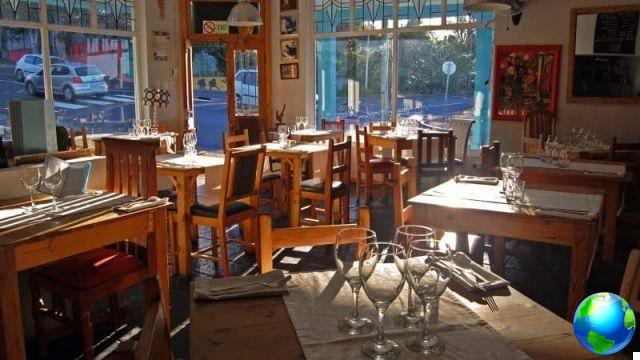
10 must-see things to see and do in Cape Town
1. See the sunset from Table Mountain
Table Mountain dominates the city; this large flat-topped mountain massif is just over 1000 meters high and its sheer walls overlook the city center (as well as being much loved by mountaineers). My advice is to take the cable car around 4-5pm to enjoy the crazy sunset view of the Twelve Apostles on one side and the city center / Waterfront on the other. Often at sunset the summit is then "covered" by the famous "Table Cloth", a blanket of clouds that caresses the mountain before dissolving towards the ocean: the effect is truly spectacular.
NOTE: if you go in high season, first buy your tickets online from this site. The return ticket with ascent in the afternoon costs about 19 euros and can be used for 7 days from the date you choose (this is because it can happen that the cableway is closed if the wind is too strong).
2. Trekking su Lion’s Head
If you love walking, don't miss the trek that arrives on Lion's Head. You can start from the Signal Hill car park (thus adding 1 hour of trekking round trip), or from closer, parking the car along the road that leads to Signal Hill (the path is well signposted). It will take you about 2h to climb but the view from the top of Lion's Head is superb! Many go up at sunset, but you will then have to bring headlamps to go down in the dark. The trek is not difficult, but in the very last part to reach the summit you climb with the help of chains fixed on the rock.

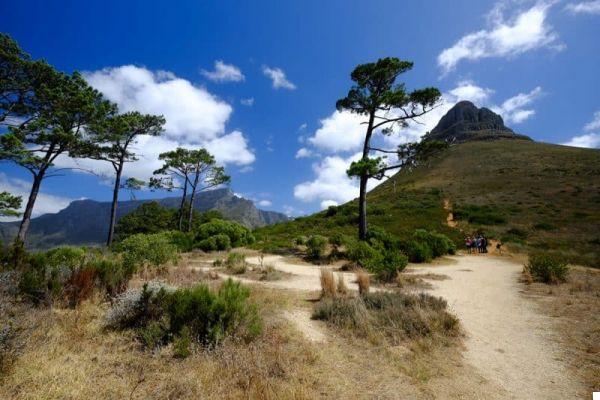
Upper Cape
Bo-Kaap is one of Cape Town's most photographed and instagrammed neighborhoods. It is one of the oldest and most evocative districts of the city, with small terraced houses in very bright colors in Dutch and Georgian style inhabited by the Muslim community. The inhabitants of Bo-Kaap are the descendants of dissidents and slaves imported by the Dutch in the XNUMXth and XNUMXth centuries. The streets not to be missed are Chiappini Street and Rose Street.
4. The historic center
Strand Street marks the boundaries of Cape Town's ancient waterfront. To the south is the Upper City Center, where you will find the remains of the historic heart dating back to 300-350 years ago, those that survived modernization and above all the urban planning rules of Apartheid. Among the main monuments the House of Parliament, the beautiful Company's Gardens, the Castle of Good Hope (the oldest building in South Africa), the Slave Lodge (once used for the "storage" of slaves, now houses a museum on the history of slavery) and the moving Distric Six Museum (which displays photos and other material related to the forced evacuation of the entire neighborhood caused by Apartheid).
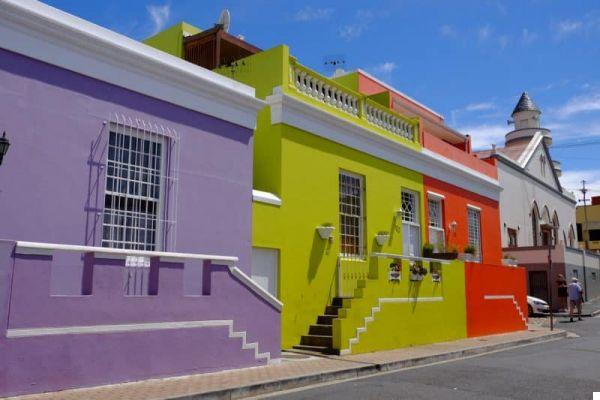

5. Kirstenbosh Botanical Gardens
Established in 1913, these botanical gardens located 13 km from the city center were the first botanical garden in the world to be recognized as a UNESCO World Heritage Site in 2004. The gardens are very large (the visit takes at least 2 hours), but the paths are well signposted. Don't miss the Tree Canopy Walkaway, a suspended walkway made of steel and wood that winds through the trees and offers magnificent views of the garden and surrounding mountains.
6. Street Art tour a Woodstock
The Woodstock neighborhood is one of the oldest suburbs of the city and was, until recently, inhabited exclusively by the colored working class. Now there is a movement of reconversion and bourgeoisie of the area with the aim of turning it into a sort of design district, with design shops, cafes, art galleries, etc. At the moment, however, this process is happening a bit "in patches" and hipster places like the Woodstock Exchange alternate with extremely infamous and potentially dangerous streets. The whole neighborhood is littered with excellent street art both by local artists and well-known foreign street artists. If you are a lover of the genre, like myself, I absolutely recommend that you take a guided tour with Juma; the tour lasts 1h and 30 '(they do at least 4 per day) and costs R 350 per person. If you can, plan to come here on Saturday mornings when the Old Biscuit Mill on Albert Road hosts a beautiful market of organic and artisan foods, local designer items and more.
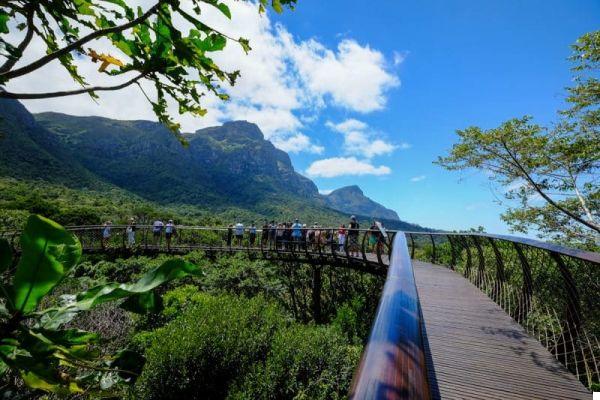
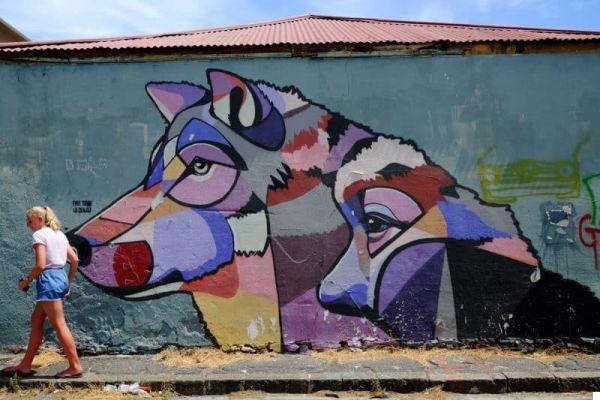
7. MOCAA – Zeitz Museum of Contemporary Art
This Museum of Contemporary Art opened its doors at the end of 2017 and represents the most important Museum of Contemporary Art in all of Africa. It is housed in a former grain warehouse on the Waterfront and the permanent and temporary exhibits are spread over 4 floors. The Museum is very beautiful both from an architectural point of view and for the works exhibited and offers an important overview of modern and contemporary African art. At the moment it is not possible to buy the ticket online in advance (a South African ID is required), but the queue to get in is disposed of quite quickly. The ticket costs 13 euros.
8. Robben Island: visit to the prison where Mandela was held
This island of just 6 square kilometers is located a few kilometers off the Waterfront and is the inspiring symbol of the struggle for the liberation of South Africa. Used as a prison since the 600s, it has become infamous for being the "home" of Nelson Mandela for almost 20 years. The last political prisoners were released in 1991 and the common ones in 1996; since 1997 a museum has been established on the island and in 1999 it was declared a UNESCO World Heritage Site. To visit it you need to participate in a guided tour that lasts about 3,5-4h (including the return transfer by ferry to reach the island). It is better to book in advance, paying by credit card, because the ferries are often full, especially in December and January.
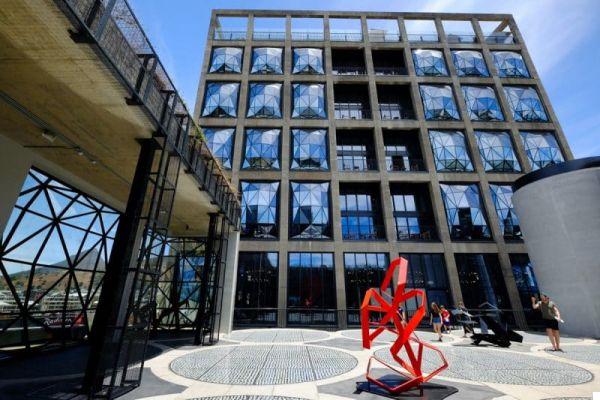
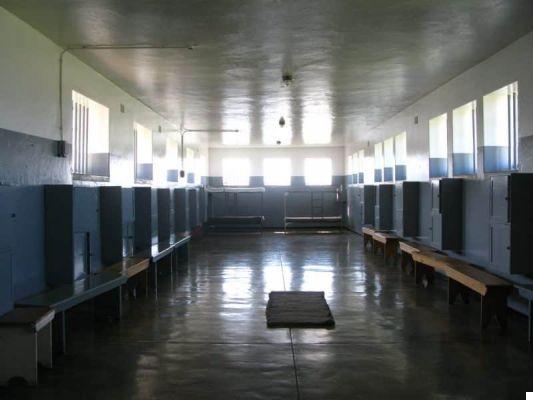
9. Nightlife su Long Street
The dynamic Long Street is located in the historic center and is famous for hosting the liveliest nightlife in the city. When Muslims settled there some 300 years ago, it marked the urban limits of Cape Town while by 1960 it had become a seedy street of drunkard bars and brothels. Miraculously it underwent a profound transformation in the years to come becoming the hub of the city's evening life, with fast food, clubs, restaurants and backpacker hostels.
10. The beaches (Clifton Beach and Camps Bay)
If you come to Cape Town in the summer (December-January) the call of the suntan on the beach will be too strong but don't worry, you will be spoiled for choice! Cape Town has many city beaches and, especially those protected by the Twelve Apostles, are really beautiful. The best in my opinion are Clifton Beach (specifically Beach # 2) and Camps Bay, two long white sand beaches that are located right under the most luxurious and exclusive neighborhoods of Cape Town (which have the same name, Clifton and Camps Bay ).
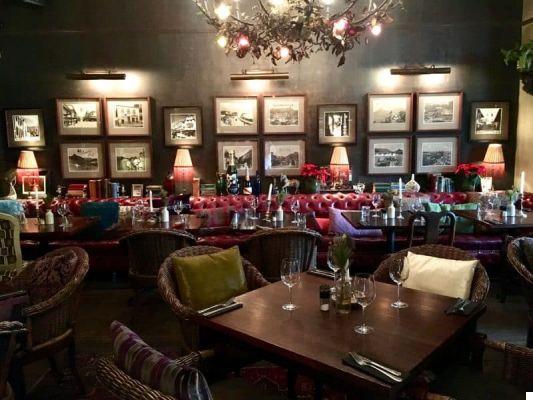
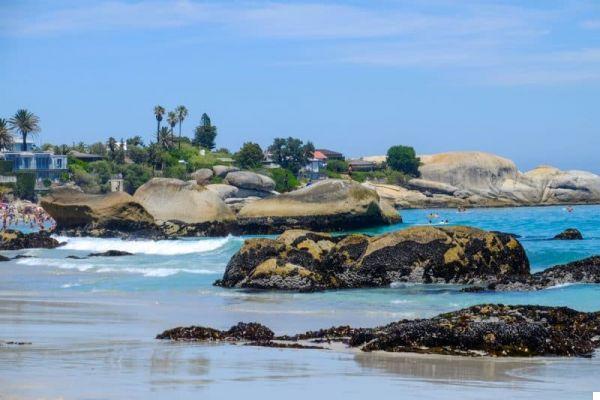
The surroundings of Cape Town
Kayelitscha township tour
There are travel experiences that, more than others, change us inside and the visit of the township of Khayelitsha was certainly one of them for me.
This township (favela), like so many others throughout South Africa, was born with Apartheid when millions of blacks and mestizos were forced to move to these ghettos on the outskirts of the cities. Khayelitsha is a mestizo township and today has nearly 3 million people, basically a city within a city. Some lucky ones live in brick houses… many others in tin shacks resting on the sand without water or toilets inside and they wait for years to be assigned a real house. Here, when you have the opportunity to see such realities it is impossible and inhumane not to be deeply grateful for having been lucky enough to be born in this part of the world and in this time. To do the tour I suggest you contact Juma (the same who organizes the street art tour in Woodstock); I took the half day tour for the price of 650 R (which includes the transfer from the hotel and lunch in the township). Other agencies also organize tours in other townships (eg Langa).

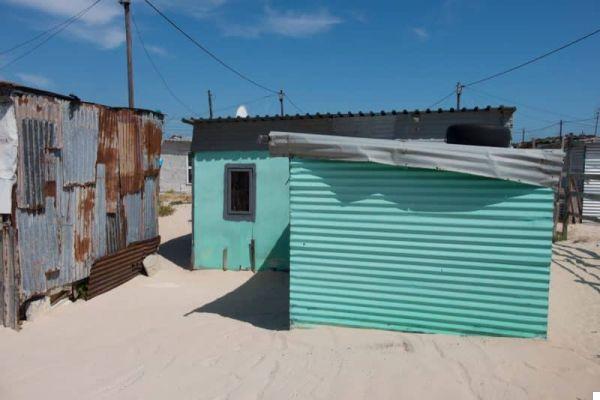
A trip to Hermanus to see whales
The holiday town of Hermanus is located 112km north of Cape Town and is the 'South African capital of whales'. All 9 species of large Southern Hemisphere whales pass by the coasts of South Africa, but the most sighted is the black southern right whale. The females arrive near the coast of Hermanus for the weaning of the young which goes from July to October, but it is not uncommon to be able to see them until December. The best way to see them up close is to join a boat trip: several operators depart from the port of Hermanus offering very similar services. If you suffer from seasickness… be prepared to suffer a lot, but it's absolutely worth it!
Muizenberg
The waters of the False Bay coast in summer are considerably warmer than those of the Atlantic coast and that is why it is one of the most popular bathing areas in Cape Town. In particular Muizenberg, once the trendiest beach in South Africa, today is a decayed holiday resort but has remained famous thanks to the beautiful wooden cabins on the beach painted in bright colors and the wind that makes it very popular especially by lovers of kitesurfing.
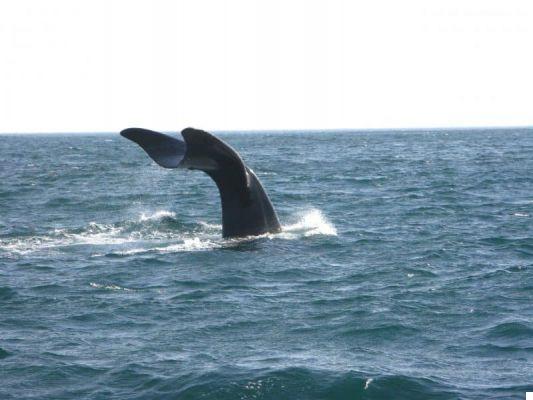
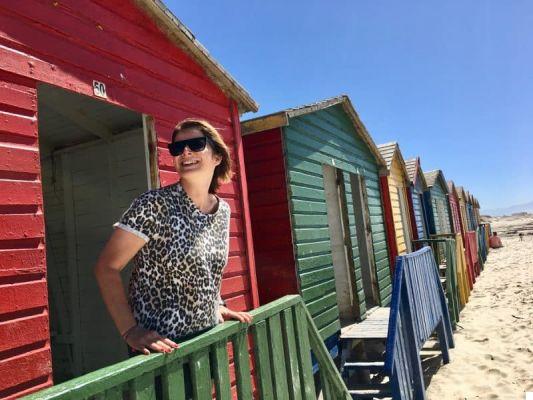
To Boulders Beach to see the penguins
Less than 20km south of Muizenberg is the Boulders Penguin Colony Reserve. Here, among the rock boulders that create small sandy coves with super transparent water, it is possible to see a small permanent colony of African penguins. The reserve (75R) is accessed from two gates located at the two opposite ends of Seaforth Beach; from there you can then walk on a wooden walkway that runs along the entire beach that will allow you to see hundreds of these funny and clumsy animals.
Cape Point and the Cape of Good Hope
Continuing along the same road, you enter the Cape of Good Hope Section (entrance 145R) which is also part of the Table Mountain National Park, to see the southernmost tip of the African continent. The reserve sits atop the cliffs overlooking the stormy sea. From the car park where you will leave your car, the Cape Point viewpoint can be reached on foot via a path (15 'maximum) or by funicular (55R one way or 70 RA / R). In both cases you arrive at the old lighthouse (beware of the macaques if you have food in hand!). To reach the real Cape of Good Hope (the promontory that Vasco de Gama first doubled in 1497 to get to the Indies) you will have to take your car back and follow the signs that indicate it (it is a few km from Cape Point). I must admit that it is always a little effect to be in these “record-breaking” places.

